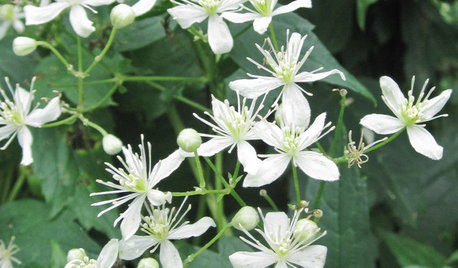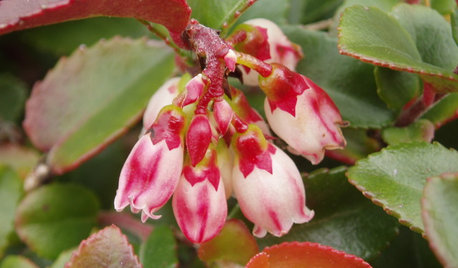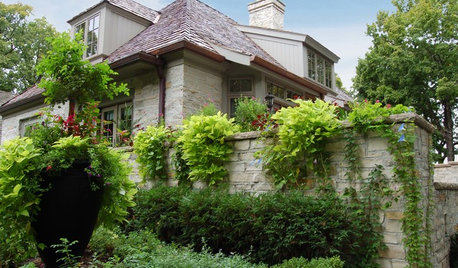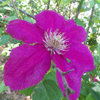3rd year clems, questions and Sweet Autumn Clematis
kimcoco
14 years ago
Related Stories

GARDENING GUIDESGreat Design Plant: Clematis Virginiana
Devil’s darning needles, a vigorous vine native to eastern North America, likes partial shade and many types of soils
Full Story
GARDENING GUIDESGreat Design Plant: Evergreen Huckleberry Appeals All Year
Spring flowers and summer berries are only half the story with Vaccinium ovatum, a versatile Pacific Northwest native plant
Full Story
FOLIAGEGreat Design Plant: Ornamental Sweet Potato Vine
Versatile, fast growing, inexpensive and easy on the eyes, ornamental sweet potato vine has it all
Full Story
DECORATING GUIDESA Subliminal Approach to Fall Decorating
Get your home in the autumn groove without going over the top, with decorating ideas from two top San Francisco designers
Full Story
GARDENING GUIDES6 Captivating Roses for an Alluringly Fragrant Garden
Perfume your garden with aromas from richly spicy to lightly sweet, without sacrificing an inch of color
Full Story
FALL GARDENING6 Trees You'll Fall For
Don’t put down that spade! Autumn is the perfect time for planting these trees
Full Story
GARDENING GUIDES8 Plants for a Deliciously Fragrant Fall Garden
Scent the autumn air with the perfume of caramel corn, honey and spices by adding these intoxicating plants to your landscape
Full Story
GARDENING GUIDESWhat Are Your Spring Gardening Plans?
Tearing out the lawn? Planting edibles? Starting from scratch? Tell us what you plan to change in your garden this year
Full Story
COLOR4 Hot Color Trends to Consider for 2013
Bring some zing to your rooms for the new year, with high-energy shades that open the eyes and awaken the spirit
Full Story
EDIBLE GARDENSHow to Grow 10 Favorite Fruit Trees at Home
Plant a mini orchard in fall, winter or early spring to enjoy fresh-off-the-tree fruit the following year
Full Story






kentstar
kentstar
Related Professionals
Carson Landscape Architects & Landscape Designers · Franconia Landscape Architects & Landscape Designers · White Oak Landscape Architects & Landscape Designers · Frisco Landscape Contractors · Matthews Landscape Contractors · Cary Landscape Contractors · Doctor Phillips Landscape Contractors · Estelle Landscape Contractors · Garland Landscape Contractors · La Verne Landscape Contractors · Mount Sinai Landscape Contractors · San Antonio Landscape Contractors · Yuba City Landscape Contractors · Goldenrod Landscape Contractors · Camp Springs Landscape Contractorsnckvilledudes
kimcocoOriginal Author
nckvilledudes
kimcocoOriginal Author
michael_in_chicago